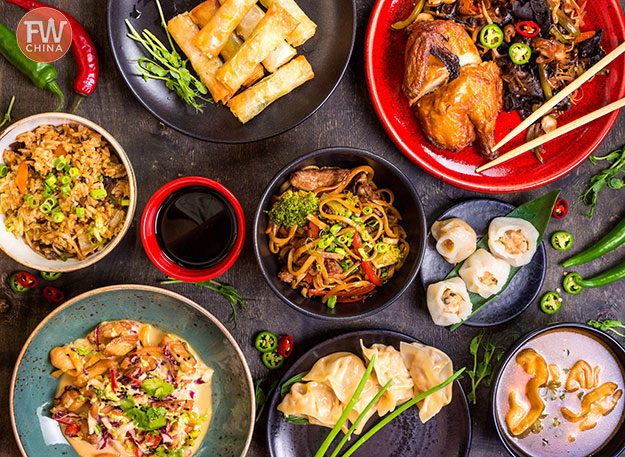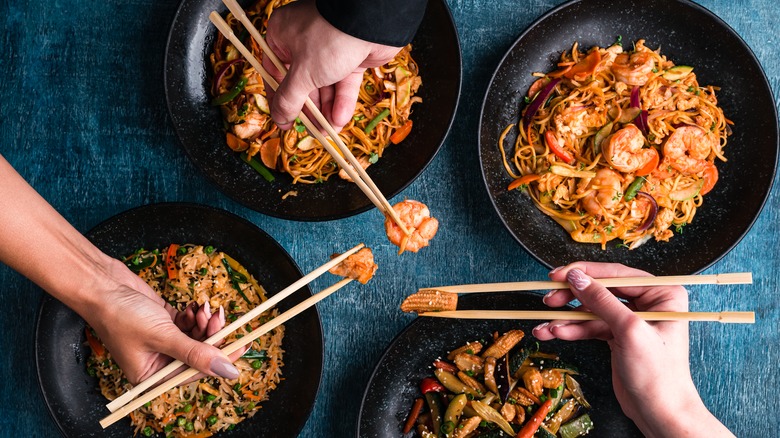20 Free Ideas To Explore China Rich Food History
20 Free Ideas To Explore China Rich Food History
Blog Article
Explore Regional Cuisines Of China: Top 10 Tips
1. Know the Eight Culinary TraditionsTip: Be familiar with the eight most popular Chinese dishes: Sichuan, Cantonese, Shandong, Jiangsu, Fujian, Hunan, Anhui, and Zhejiang. Each has unique flavors, cooking techniques and cuisines.It helps you to plan your culinary adventures by analyzing your preferences in food.Con: It's a challenge to keep track of the particulars of each dish.
2. Take local cuisine into considerationYou should try some of the famous regional dishes for example, Peking Ducks in Beijing or Shanghai or Hot Pots in Chengdu.Pro: You'll be able to enjoy a culturally rich and authentic dining experience.Cons: May restrict your ability to try other cuisines in the region you're visiting.
3. Be aware of the local tastesTips Advice Sichuan food can be hot and dulling. Cantonese dishes are light, fresh and sweet. Jiangsu is delicate and sweet. Pick dishes according your spice tolerance.Pro: You will be able to order dishes that are suitable for your tastes and avoid having them sent back.Con Certain flavors require testing to find.
4. Discover Street FoodTake a bite of street food in all cities. For example in Beijing you can find Jianbing which are savoury crepes. In Xi'an there is Roujiamo, which is Chinese hamburgers. Try something new and local foods.Pros The benefits of street food are inexpensive, quick and tasty and is a fantastic method to get a glimpse of the local cultural diversity.Con: Hygiene can sometimes be a concern; choose vendors that have a high turnover.
5. Learn Basic Dining EtiquetteTip: Be aware of Chinese eating customs such as sharing with family members and avoid placing chopsticks vertically into rice.Pro: Shows respect to local traditions and improves your dining experience.Con: Takes time to learn and adapt to new manners of conduct.
6. Ask locals for recommendations.Locals are often able to give you a good idea of the best places to eat and the best dishes in a particular area. Get advice from them.It can help you avoid tourist traps but also uncover hidden treasures.Con: Communication may be difficult due to language barriers.
7. Be Open to Unfamiliar IngredientsTips: Regional cuisines can contain unusual ingredients, such as bamboo shoots, lotus root or the sour tofu. Explore new food items.Pros: Expands your understanding of Chinese food culture.Con: Some foods may not be suitable for your tastes or dietary restrictions.
8. Create dietary restrictions that are compatible withTip: You can use Mandarin phrases to communicate preferences or allergies. For example, "Wo bu Chi Rou" (I do not take meat for dinner).Pro: A custom dining experience that is tailored to your requirements.Cons: Certain foods may be limited in their options for people with certain dietary restrictions.
9. Pair Food with Regional DrinksExplore local drinks such as Shaoxing Wine from Zhejiang or tea from Fujian.Pro: Enhances your culinary experience and enhances the dining experience overall.Con: Strong flavors such as baijiu, for example, might not be suitable for everyone.
10. Avoid OverorderingTip - Chinese food is served family-style. So order conservatively. If you require more, you can add it.Benefits: You'll have the chance to taste many dishes and don't throw away food.Cons The temptation is to spend too much money on food due to the large variety.
The benefits of exploring regional Cuisines In ChinaEnjoy a wide variety of flavors and techniques, as well as the ingredients.Cultural insight: Understand the regional identity and customs.The cost of many local meals is reasonably priced.Memorable Experiences - Trying the most famous dishes from their nation of origin will give you lasting memories.The cons of Exploring Chinese Regional CuisineHygiene concerns. Certain street foods or restaurants aren't likely to be up to international standards for cleanliness.Language Barriers: Menus and descriptions may only be translated into Mandarin which makes it difficult to order.Unusual Ingredients: Certain tastes or textures can be difficult for some people.Dietary restrictions: Vegetarians who are strict or vegans or those with food allergies may struggle in some regions.Use these suggestions to appreciate the delicious and diverse variety of Chinese regional foods and navigate the challenges! Check out the best China culinary hotspots for blog recommendations including a tour of China regional cuisine, explore China riCh food history, the best food destinations in China, journey through China food culture, China flavorful food culture, China food heritage revealed, China food heritage revealed, discover the tastes of China cities, the best food destinations in China, culinary experiences across China and more.
Top 10 Tips For Rituals To Follow When Visiting Famous Chinese Temples
1. Respect the guidelines of your temple. Each temple will have their own set. Take special care during rituals and when entering sacred areas.Pro: Respects local traditions and sacred temple space.Con: It's difficult to learn the rules for temples with complicated rituals.
2. Be Quiet and RespectfulTips: Respect the temple by being quiet during the rituals and while at the temple. Be careful not to talk too loudly or laughing.Pros: Helps create reverence and peace for worshippers.Con: If you are unfamiliar with local customs and the local environment it can be uncomfortable.
3. Dress sensuallyAvoid wearing revealing clothing and dress in skirts or long pants. Some temples offer scarves and shawls to cover bare arms.Pro: Shows respect for the sacred site and its worshippers.Con: Visits on hot days could require additional planning and/or additional clothing.
4. Perform the Ritual of OfferingsIt is possible to follow the locals' guidelines if you would like to present incense or fruits, as well as other items.Pro: Shows respect for the sacred rituals and help you blend in with the traditions.Cons: It can feel awkward to participate in a ritual if one is not familiar with it.
5. Do not interrupt your meditation or prayer.Do not interrupt worshipers when they are meditating or praying. Take no photos or start a conversation when someone is engaged in a religious practice.Pro: demonstrates the respect for culture while maintaining the peace of a reverent, peaceful setting.Con: Even though you may wish to record some events for your records It could be an invasion of your privacy.
6. Lighting of IncenseTips: Chinese temples have a ritual of lighting incense. To honor the gods, you can burn incense when permitted. Hold the incense between your fingers and make an oblique bow when you offer it.Pro: It shows that you respect the temple tradition and actively engage in its practices.Cons: Incense is unfamiliar to many travellers. Unsafe handling could be a sign of disrespect.
7. Do not touch sacred statues and ObjectsTIP: Do not touch holy statues, relics or other temple items unless specifically permitted to do so.Pro: Maintains the reverence for the temple.Con: You may be lost if you do not know the boundaries of the temple.
8. Be aware of Temple HierarchyTip. In certain temples you will find different levels or sacredness. Avoid walking near altars holy statues, sacred shrines or other holy places. Also, be aware of when to bow.Pro -: You should keep the decorum of the temple, and be respectful of it. This is a sign that you understand the traditions of the temple.Con: The hierarchy might not always be obvious making it more difficult to understand the acceptable standards.
9. Keep Offerings HumbleTIP: If you opt to present offerings (flowers or fruits, or money) be sure to keep them in a modest manner and in accordance with local customs. Gifts that are expensive and extravagant could be viewed as unappropriate.Pro: Displays an attitude of humility and respect for the local culture.Con: You may feel not sure of the type of product is appropriate, without local guidance.
10. Take Part in Temple Events if InvitedTips: Many temples host special events, such as ceremonies, prayers or special days. When you are invited to participate, make sure you are considerate and stay with the crowd.Pro: It connects with the local culture and lets you experience the temple in a deeper way.Con: Participating in unfamiliar rituals can feel uncomfortable and awkward when the procedure isn't strictly adhered to.
Cons of Observing Rituals at TemplesCultural Immersion: By participating in a ritual, you'll learn more about the culture and traditions of China.Respectful Interaction. Observing locals, and the temple personnel with respect and engaging in respectful conversations will foster positive relationships.Personal Development: Engaging in spiritual or cultural practices can be an uplifting and enriching experience.The temple rituals can be a wonderful way to create lasting memories.Cons of following Rituals and practices in TemplesUnknown. For those who are first-time visitors, it is possible to find rituals confusing, resulting in discomfort or mistakes.Cultural MistakesDue to language barriers, you may have difficulty to comprehend rituals or instructions.Physical discomfort - Certain practices such as bowing or standing for all day can be physically demanding.Use these guidelines to ensure a meaningful, respectful, and enjoyable trip to China's most famous temples. Engage in the religious rituals of the locals without being offended. See the best savor China regional food specialties for more examples including journey through China food culture, taste the regional flavors of China, discover China culinary delights, from street food to fine dining in China, a culinary journey through China, a culinary journey through China, discover hidden food gems in China, a guide to eating like a local in China, explore China riCh food history, taste the regional flavors of China and more.